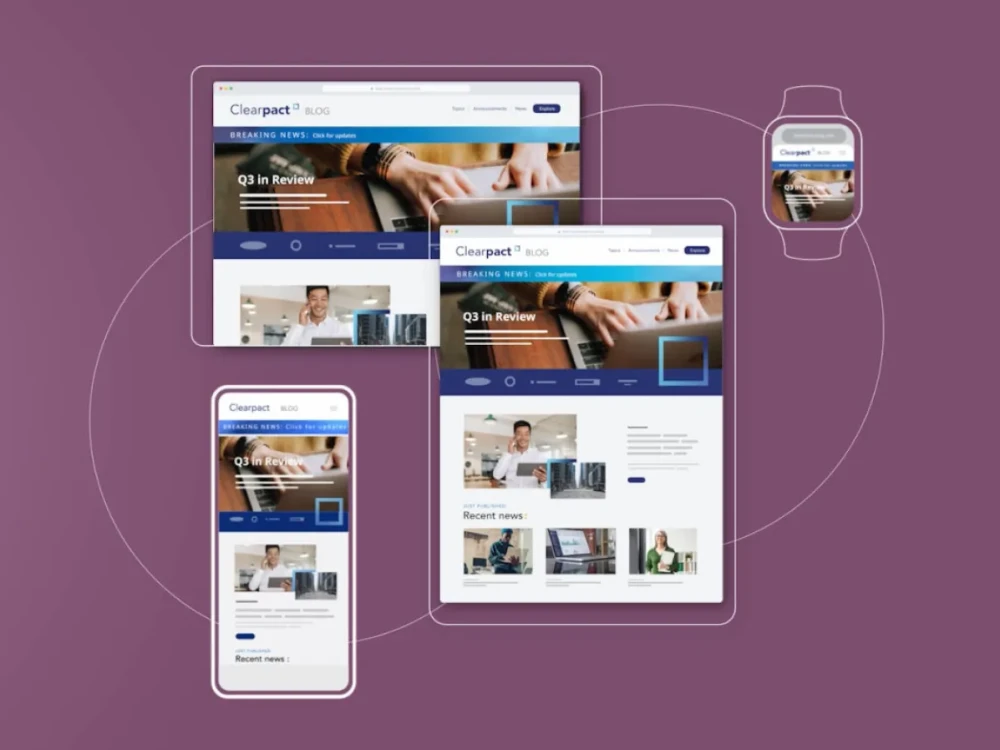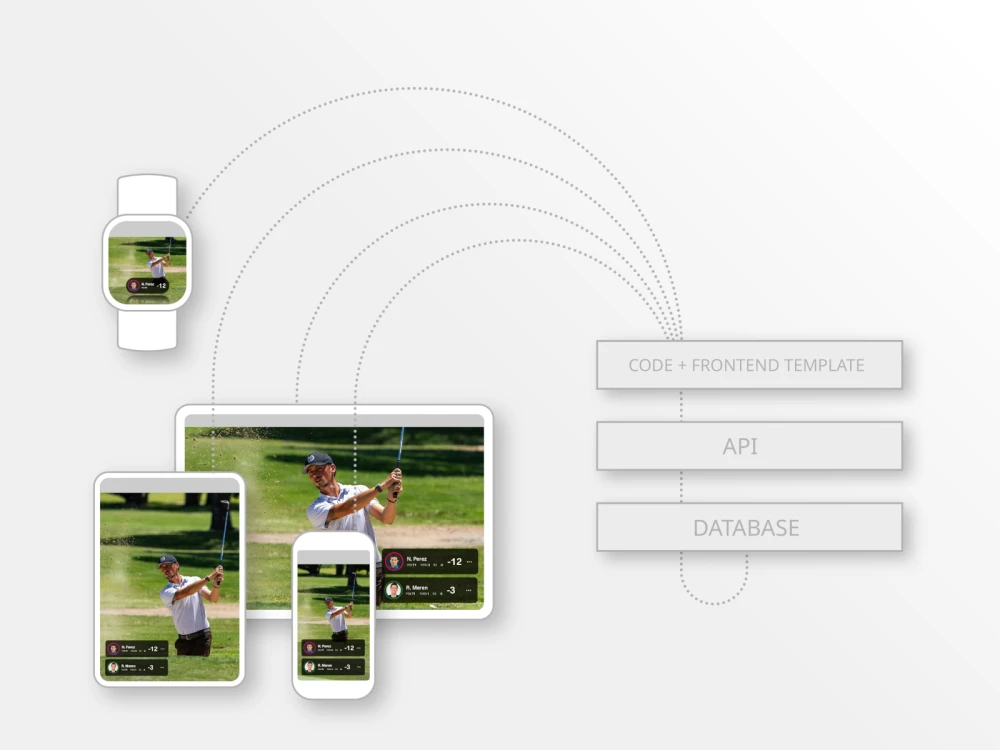If you’re exploring changes to your content management system, then you’ve probably heard about the trend toward headless CMS architecture. On a headless system, the CMS is solely responsible for storing and managing content, with no predetermined framework for presenting the content.
Headless architecture is a variation on a decoupled architecture, where the back end and front end are separated. A headless CMS can be an excellent way to support multiple channels with maximum flexibility, but it also has some limitations.
As companies sift through the pros and cons of coupled, decoupled and headless CMS platforms, one of the most common questions that comes up is: Do I have to choose, or is there a hybrid system architecture option?
Not necessarily. One option would be to combine decoupled and headless architecture styles into a hybrid approach.
But before we get too deep into the specific considerations, let’s take a step back and examine some definitions.
Understanding CMS architectures: What’s the difference between a headless and hybrid CMS?
- Headless CMS: A system where content storage and management are its primary functions, without a predetermined presentation layer.
- Hybrid CMS: A blend of traditional and headless architectures, offering flexibility in content presentation and distribution.
Who benefits from headless and hybrid CMS architecture design?
A headless CMS is terrific for the Ubers and Airbnbs of the world that are building huge microservices platforms in the cloud and need content services as well, IDC’s Melissa Webster has noted, adding that they are also a good option for media companies that want to migrate content from a custom CMS and use it as the basis for custom apps. However, headless architecture also has limitations.
We think the ultimate solution is really a hybrid approach that brings forward all the benefits of web content management that we’ve accumulated over the last 25 years and adds to it the ability to support developers building headless applications.
What is the best technical framework for my business: Headless or hybrid?
Headless CMS offers a streamlined approach, focusing solely on content on the back end, offering the choice of delivering to whatever front-end framework you need. Hybrid CMS, on the other hand, provides a more comprehensive platform, balancing content management with presentation.
At Brightspot, we believe in front-end freedom of choice — to be able to choose the architecture that best suits each individual organization’s unique needs. That’s why we’ve designed Brightspot CMS to operate as a traditional, decoupled, headless or hybrid CMS solution.
What’s the most scalable CMS architecture: Headless or hybrid?
Both architectures are scalable, but headless CMS often shines in multi-channel content distribution, while hybrid CMS offers a more integrated approach for larger organizations.
What are the integration capabilities for a headless or hybrid CMS?
Headless CMS is designed for seamless integration with various platforms, thanks to its decoupled nature. Likewise, hybrid CMSs, equipped with APIs, stand out as a robust, integration-ready solution that can accommodate a range of integrations from across your tech stack.
Considerations around CMS vendor support & community
While many vendors support both architectures, it’s crucial to choose one with a robust community and consistent support, ensuring long-term viability.
What are some cost considerations when evaluating a headless vs. hybrid approach?
Headless CMS can be cost-effective for organizations with a strong development team, while hybrid CMS might offer more out-of-the-box solutions, potentially reducing initial setup costs.
What are my options when it comes to customization and flexibility for the different types of CMS architecture?
Headless CMS offers unparalleled customization, especially for unique content distribution needs. Hybrid CMS provides flexibility, especially for those looking for a more standardized approach.
What about migration on to a new CMS platform?
Migrating to a new CMS can be daunting. Headless CMSs often offer smoother transitions due to their decoupled nature, but hybrid systems might provide more comprehensive migration tools.
- Having lightweight intuitive APIs in JSON or XML lets developers use any language. They’re freed from learning a complex CMS, and they benefit from modern tooling and standards like GraphQL.
- A “content-first” approach facilitates content reuse across different experiences and channels.
- Separation of content and presentation lets authors and developers work independently, accelerating time to market.
- It’s easily integrated with other applications as a service.
- The platform is generally cloud-based or cloud-ready.
- A headless CMS architecture can be lower cost, particularly if you already have a strong internal development team.
- Solutions generally lack capability for WYSIWYG authoring, presentation, website navigation, multi-site management, responsive design, accessibility, compliance, SEO, link checking, version management and admin, and workflow. The result is custom code or the need to manage multiple CMSs. There’s a learning curve for marketers.
- The developer focus of headless systems can leave business users out of the loop. (Some do offer single-page application (SPA) editors, limited site navigation and other features.)
- Emerging vendors are reliant on venture capital.
- A hybrid CMS system has the advantages of decoupled and headless, offering both application and platform.
- Like headless, hybrid system architecture promotes content reuse.
- It’s generally cloud-based or cloud-ready.
- You can achieve WYSIWYG authoring, template management, website navigation, multisite management, accessibility, compliance, SEO, link checking, version management and admin, and workflow.
- A hybrid leverages a huge JavaScript talent pool and widely available skill sets by offering modern interfaces for JavaScript developers.
- It fosters collaboration between marketing and the development team on a full array of digital experience
- Feature set
- Architecture
- Technical team
- Capital
- Customer base
- Partnerships
- Support









